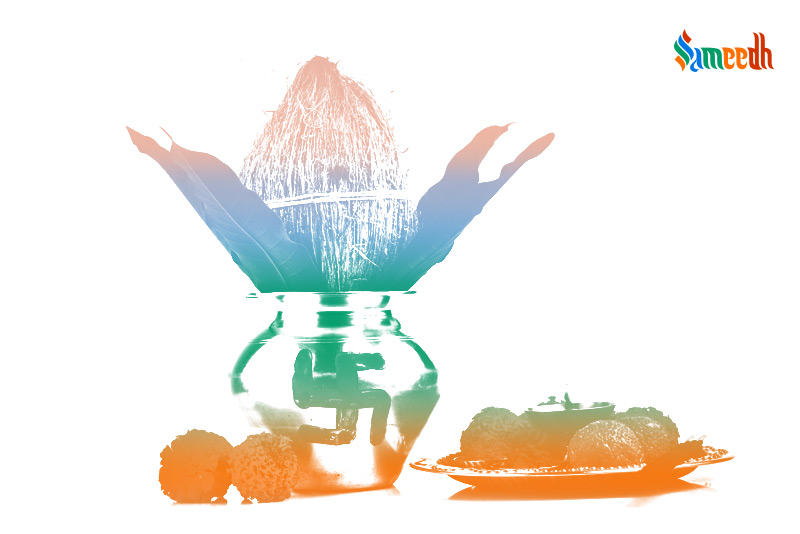The prominence of the sacred equilateral cross symbol across religions and cultures. The swastik is a symbol with a long and varied history, and its significance can vary widely depending on cultural and historical contexts. Traditionally, the swastik is a symbol of good fortune and well-being in Hinduism, Buddhism, and Jainism. The word “swastik” is derived from the Sanskrit word “svastika,” which means “conducive to well-being” or “auspicious.”

This symbol of Swastik, an equilateral cross extended at right angles, is considered auspicious one in Hinduism, Jainism, Buddhism and several other religions too. It is believed to stem from Sanskrit words “Su” and “Astik” meaning well or good and being respectful. It is also known as Sathiya in Hinduism. Swastik is often correlated with Vastu Shastra, the science of architecture too, as its four arms represent the four cardinal directions; North, South, East, West and it can bring a balance of natural elements to the house too.
The clockwise Swastik demonstrates the positioning of the Sun. It rises from the East, then during the course of the day settles towards South and gradually sets moving to West. Therefore, the clockwise Swastik is regarded as a solar and the anticlockwise is involved in rituals that are conducted during night times. As goddess Kali of death rules over the nights, the same is used while offering prayers to her.
Origins
There are multiple sources of origin for this symbol. It has been observed even during the bronze and iron age, which dates it back to as far as 3300 BC. Indus valley civilization, Greek empire, the emergence of Aryans, all these periods of time have claimed the existence of Swastik. Ancient roots of Asian, Chinese, Indian as well as European and American have evidence of the occurrence and presence of this sign. Throughout, it is associated with progress, good fortune, new beginnings, good luck and similar positive traits, with the exception of a few.
Swastik in Hinduism
In Hinduism, it depicts the four Vedas, sacred Hindu religious texts, four Yugas – the age of mankind and also the four dots signifies aims of life; Dharm, Arth, Kam and Moksh.
This symbol is often illustrated upon new beginnings in the form of a new house or vehicle or during rituals as it is believed to invite goodwill and great fortune. In Hinduism, Swastik is a sign of power, prosperity and auspiciousness. It corresponds with planet Mars too, as the red planet stands for power, strength, energy and courage. Swastik is a symbol of god Ganesh, which is revered as the remover of obstacles and the god of wisdom. It is also a symbol of goddess Laxmi, which aids in financial progress. A swastika is found outside at the entrance of Hindu homes, temples and religious ceremonies, acting as a pathway attracting positive energy inside. Swastik will always be sported in a red colour, the holy colour Hinduism attributes with victory, might, passion, valiance, adventure and love. Vermillion, made from Mercury Sulphide, also known as Sindoor is used to draw the Swastik, is a sacred material used to apply Tilak and a key ingredient in various worship practices. Occasions such as Diwali, the festival of light to celebrate the victory of Ram over Ravan, witnesses the reapplication of Swastik at all the prominent locations and doors of the houses, to signify new beginnings and bring in good luck.
The correct method of chalking the Swastik is to begin from the top right corner, going all the way to the left, dragging the line below and extending it towards the right. Then, the left part is created with a downward line expanding in the right direction and again going south. In the end, four dots are made in between the squares, which represent similar elements to that to the lines.
Swastik in other religions
Swastika is a popular sign in Buddhism as well. It is associated with Buddha’s very footsteps and is marked as his footprints making it a sacred symbol of power. This equilateral cross is seen embossed on the heart and soles of Buddha’s limbs, making it purely interwoven in this religion tightly.
It is even more widely accepted in Jainism. In this faith, the propitious Swastika is the holy Symbol of Suparshvanatha, the seventh Tirthankara – saviour of dharm or religion.
A historically infamous usage of the symbol was during the reign of the Nazi party in Germany where Swastik was employed as the representation of their rather cruel agenda. Since 1920, the formation of the political party, this divine symbol has had multiple negative ideologies equated with it.
